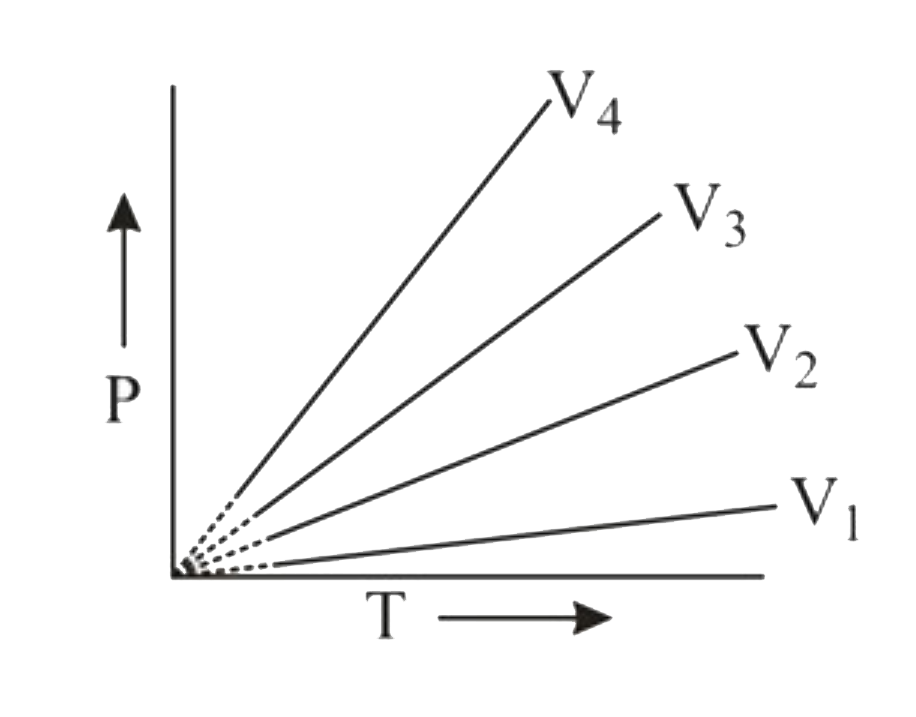The equation for an ideal gas is PY = RT, where Y represents the volume of
1g gas
any mass of the gas
one g mol gas
one litre gas
The correct Answer is:C
Step by step video, text & image solution for The equation for an ideal gas is PY = RT, where Y represents the volume of by Physics experts to help you in doubts & scoring excellent marks in Class 12 exams.
Updated on:21/07/2023Topper's Solved these Questions
- KINETIC THEORY OF GASES AND RADIATION Book:TARGET PUBLICATIONChapter:KINETIC THEORY OF GASES AND RADIATION Exercise:Evaluation test
Explore 18 Videos
- KINETIC THEORY OF GASES AND RADIATION Book:TARGET PUBLICATIONChapter:KINETIC THEORY OF GASES AND RADIATION Exercise:critical thinking
Explore 104 Videos
- INTERFERENCE AND DIFFRACTIONBook:TARGET PUBLICATIONChapter:INTERFERENCE AND DIFFRACTIONExercise:EVALUATION TEST
Explore 20 Videos
- MAGNETIC EFFECT OF ELECTRIC CURRENTBook:TARGET PUBLICATIONChapter:MAGNETIC EFFECT OF ELECTRIC CURRENTExercise:EVALUATION TEST
Explore 19 Videos
Similar Questions
Knowledge Check
Equations for an ideal gas is :
APV=RTBPVγ= constantCCp−CV=RDNone of these.Isothermal equation of an ideal gas is
ApV = constBVT = const,CPV = const,DVT = const.Equation of state of an ideal gas is
ApV=RT/nBpV=nRTCpn=VRTDpT=nRV
In a gas equation, PV=RT,V refers to the volume of
View Solutionvan der Waal's equation for calculating the pressure of a non ideal gas is
(P+an2V2)(V−nb)=nRT
van der Waal's suggested that the pressure exerted by an ideal gas , Pideal, is related to the experiventally measured pressure, Pideal by the equation
Pideal=Preal↑observed pressure+an2V2↑currection term
Constant 'a' is measure of intermolecular interaction between gaseous molecules that gives rise to nonideal behavior. It depends upon how frequently any two molecules approach each other closely. Another correction concerns the volume occupied by the gas molecules. In the ideal gas equation, V represents the volume of the container. However, each molecule does occupy a finite, although small, intrinsic volume, so the effective volume of the gas vecomes (V-nb), where n is the number of moles of the gas and b is a constant. The term nb represents the volume occupied by gas particles present in n moles of the gas .
Having taken into account the corrections for pressure and volume, we can rewrite the ideal gas equation as follows :
(P+an2V2)corrected pressure(V−nb)corrected volume=nRT
For non-zero value of force of attraction between gas moleculer at large volume, gas equation will be :
View Solutionvan der Waal's equation for calculating the pressure of a non ideal gas is
(P+an2V2)(V−nb)=nRT
van der Waal's suggested that the pressure exerted by an ideal gas , Pideal, is related to the experiventally measured pressure, Pideal by the equation
Pideal=Preal↑observed pressure+an2V2↑currection term
Constant 'a' is measure of intermolecular interaction between gaseous molecules that gives rise to nonideal behavior. It depends upon how frequently any two molecules approach each other closely. Another correction concerns the volume occupied by the gas molecules. In the ideal gas equation, V represents the volume of the container. However, each molecule does occupy a finite, although small, intrinsic volume, so the effective volume of the gas vecomes (V-nb), where n is the number of moles of the gas and b is a constant. The term nb represents the volume occupied by gas particles present in n moles of the gas .
Having taken into account the corrections for pressure and volume, we can rewrite the ideal gas equation as follows :
(P+an2V2)corrected pressure(V−nb)corrected volume=nRT
The van der Waals' constant 'a' for CO2 gas is greater than that of H2 gas. Its mean that the
View Solutionvan der Waal's equation for calculating the pressure of a non ideal gas is
(P+an2V2)(V−nb)=nRT
van der Waal's suggested that the pressure exerted by an ideal gas , Pideal, is related to the experiventally measured pressure, Pideal by the equation
Pideal=Preal↑observed pressure+an2V2↑currection term
Constant 'a' is measure of intermolecular interaction between gaseous molecules that gives rise to nonideal behavior. It depends upon how frequently any two molecules approach each other closely. Another correction concerns the volume occupied by the gas molecules. In the ideal gas equation, V represents the volume of the container. However, each molecule does occupy a finite, although small, intrinsic volume, so the effective volume of the gas vecomes (V-nb), where n is the number of moles of the gas and b is a constant. The term nb represents the volume occupied by gas particles present in n moles of the gas .
Having taken into account the corrections for pressure and volume, we can rewrite the ideal gas equation as follows :
(P+an2V2)corrected pressure(V−nb)corrected volume=nRT
AT relatively high pressures, the van der Waals' equation of state reduces to
View SolutionThe ideal gas equation for 1 mol of ideal gas is PV = nRT
graph between P and T at constant volume, i.e. isochores are plotted as under

Which of the following order of volume is correct ?
View Solution

